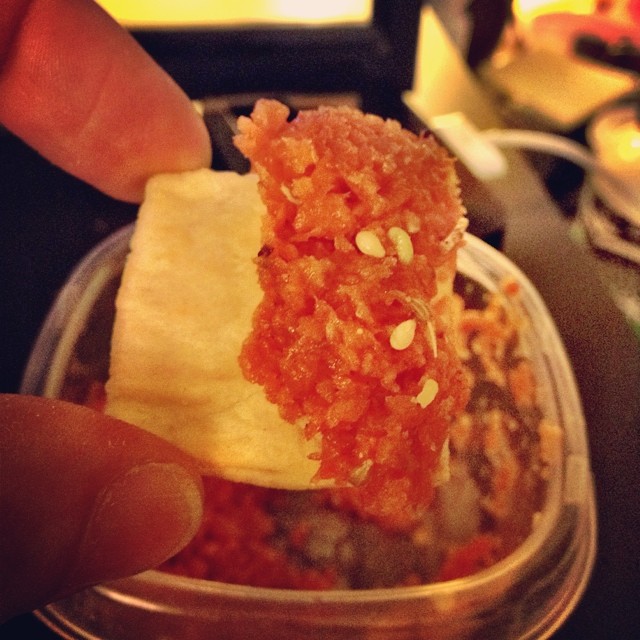After preparing it several more times I have adjusted the instructions for my Mediterranean Carrot Dip from juicing pulp recipe to make the initial carrot cooking easier, plus create a smoother texture. Read the updated recipe here.
Tag Archives: food
A Recipe To Use Carrot Pulp From Juicing
[NOTE: Edited July 6, 2014 to include changes in cooking and processing the carrots after making this a few more times]
As I’ve mentioned previously, I have an Omega juicer. Using it results in vegetable pulp – the fibrous residue of harder vegetables such as carrots, beets, and leafy greens. I’ve tried a number of recipes purporting to make tasty treats from this pulp, but so far have found none good enough that I wanted to finish the results.
While kale and celery pulp are rather stringy and unappetizing, I really wanted to find a use for the carrot pulp. I started adding to my blended breakfast cantaloupe (frozen in single servings, defrosted and mixed with yogurt) and crockpot oatmeal.
Finally I was inspired by my localvore caterer/meal CSA/event service Cuisine en Locale when they served a mezze plate which included a Turkish carrot dip. Online searching led me to several versions (such as this from local chef Ana Sortun), from which I took ingredient ideas and then winged it with my kitchen contents:
The recipe:
Semi-Boston-centric Money-Saving Tips
Tip #1: More Ice Cream For Less $
I get ice cream several times a month at local chain JP Licks. This week I accidentally discovered how to get a lot more ice cream for less: order a Chipwich, which is a serving of ice cream between two chocolate chip (or other type) cookies.
While exact quantity probably depends on the server, I discovered:
– The single Chipwich is prepared when you order, so you may request any ice cream flavor (not just vanilla).
– The amount of ice cream is at least equal to their “small scoop” which in a cup or cone costs $3.99, and is much more than their “kiddie scoop” costing $3.09
– A Chipwich = a “small scoop” + 2 three-inch-diameter cookies, all for $3.29!
Bonus JP Licks tip: Join their Cow Card loyalty program and get points for every purchase (either by swiping the keytag or using the iPhone or Android app code). 50 points gets you a $5 credit for free food!
Raw Vegetable and Fruit Juicing At Home – Part 1
“Juicing” (raw vegetables and fruit, not athletes on steroids!) has been a health tactic-verging-into-diet-fad for some years, and lately has gotten a lot of press. Many supermarkets now carry commercial brands of juices and smoothies, plus juice bars and shops sell everything from just-pressed juice to entire regimens of delivered juices and fasting support.
Personally I’m not big on “fasting” or “cleansing” to extremes – but I’m not great about eating enough vegetables. I also wasn’t interested in paying up to $10 for 16 ounces of juice!
About 7 years ago I bought a cheap juicer, but it was such a pain to use and clean that I put it on a shelf and eventually gave it away. Recently a Facebook friend posted about using her old but reliable Omega juicer, which got me interested in researching what machines were available and easier to use regularly. I was willing to spend more to get a better performing juicer after calculating the the cost savings if I were to have two 16-oz servings of juice per day:
2/day = 14/week – at a local juice business’ prices the cost is $133-140 per week.
vs
A $250 juicer plus $30/week in organic vegetables/fruit from Whole Foods and Trader Joe’s brings me out ahead of store-bought in just 3 weeks!
Yes, I could buy much cheaper juice products at the local grocery, but when you read the labels of those you will find they lean heavily on fruit juices and can have total sugar content the same as or higher than a can of Coke!
In this post I’ll describe the various types of juicers – a future post will cover how I’m using mine.

